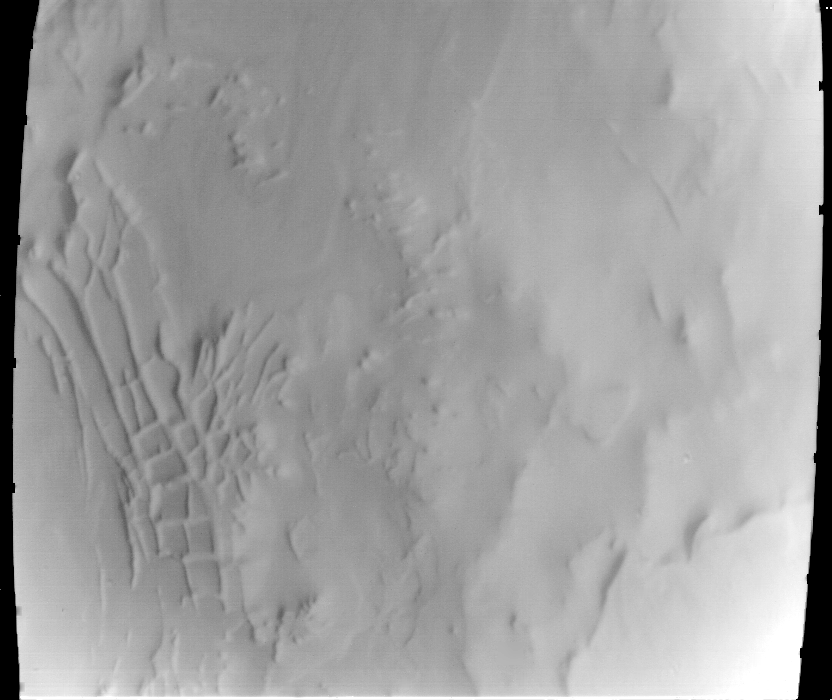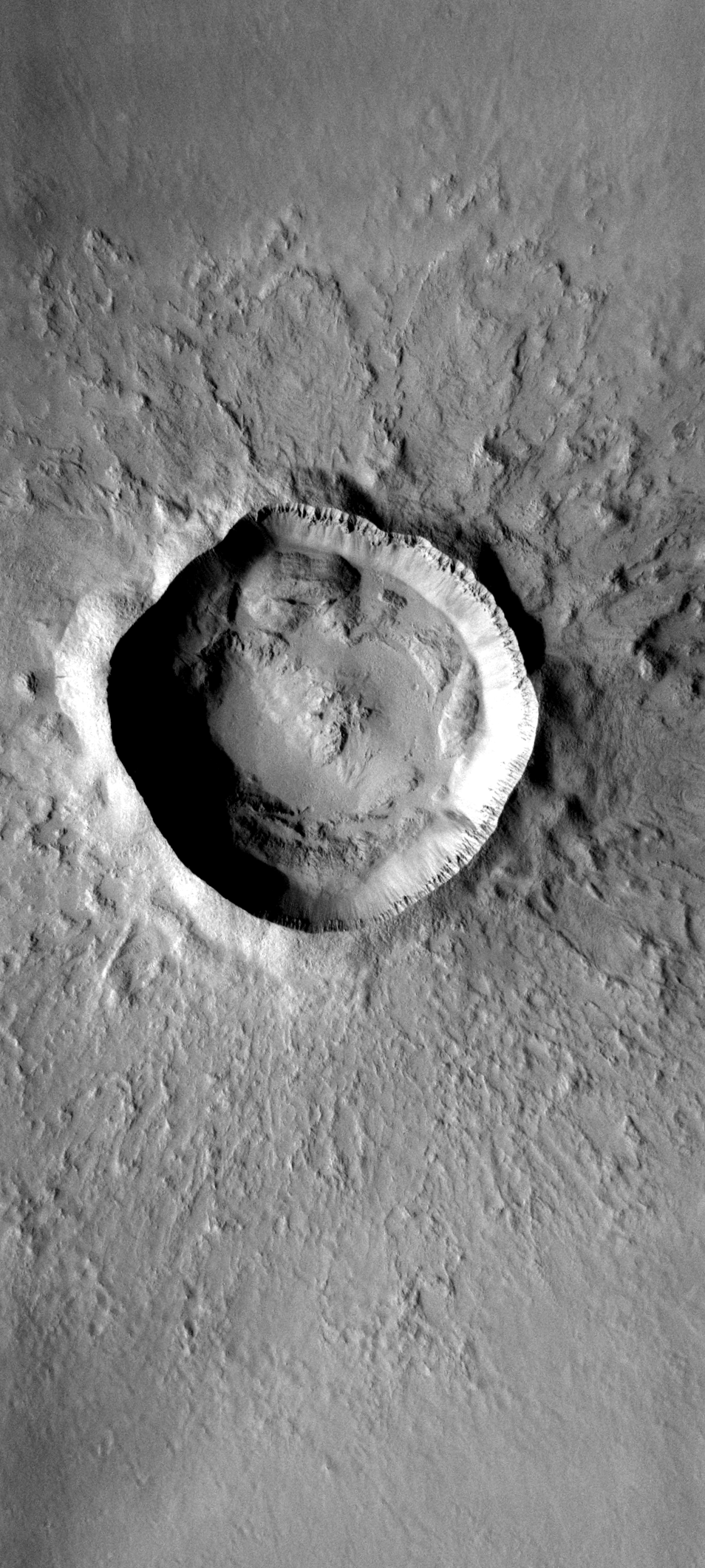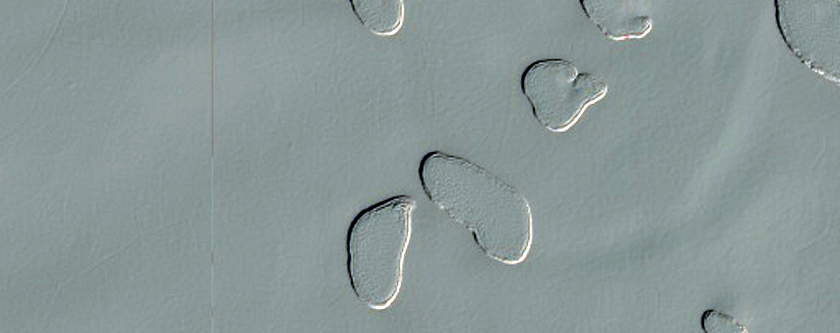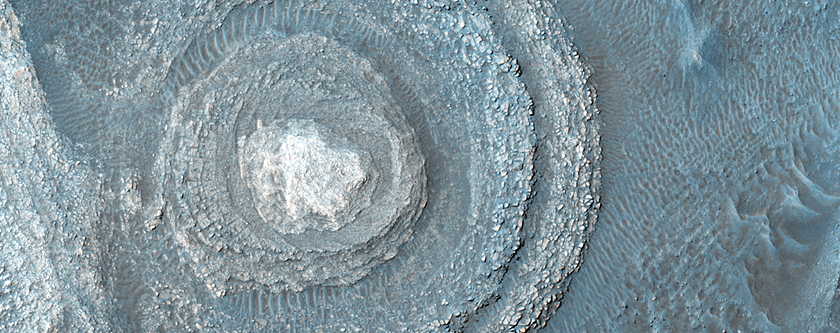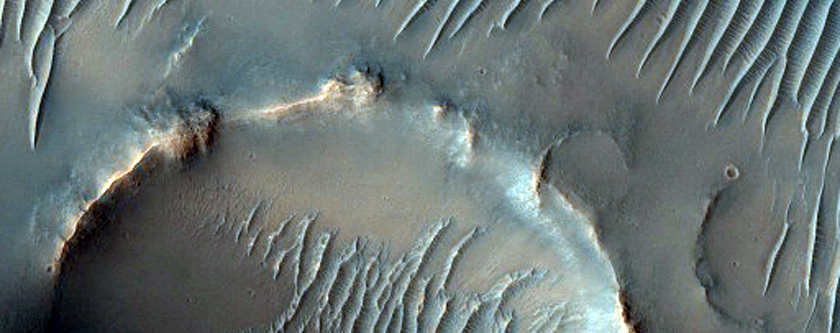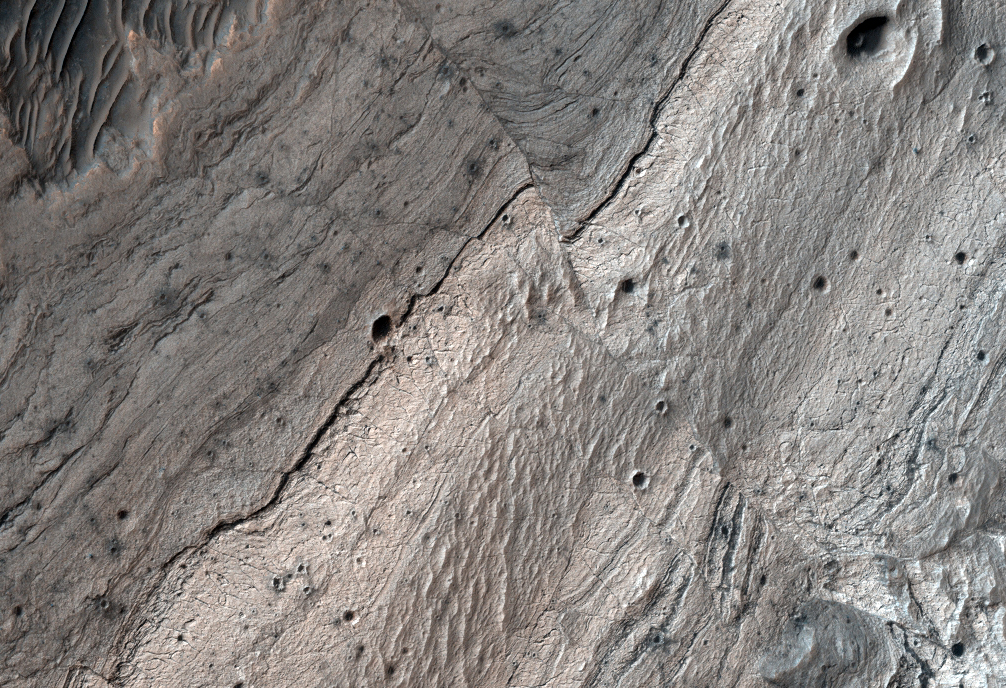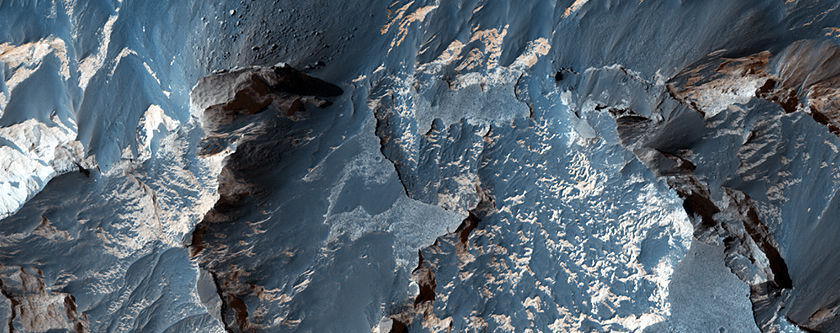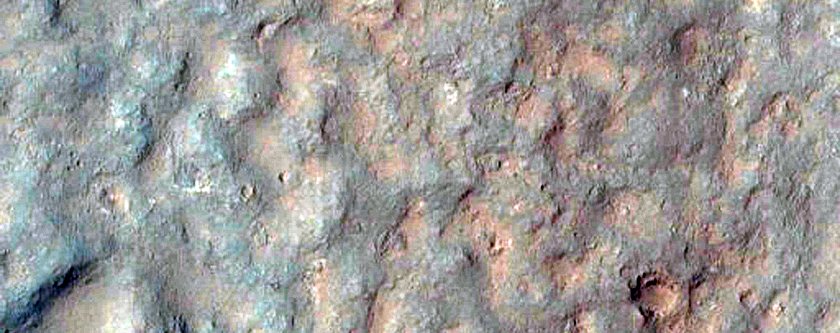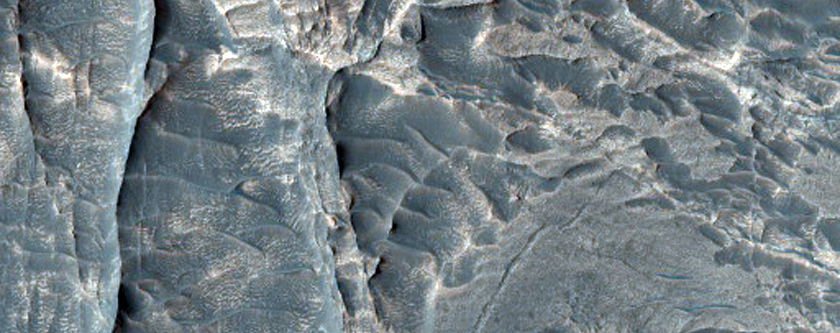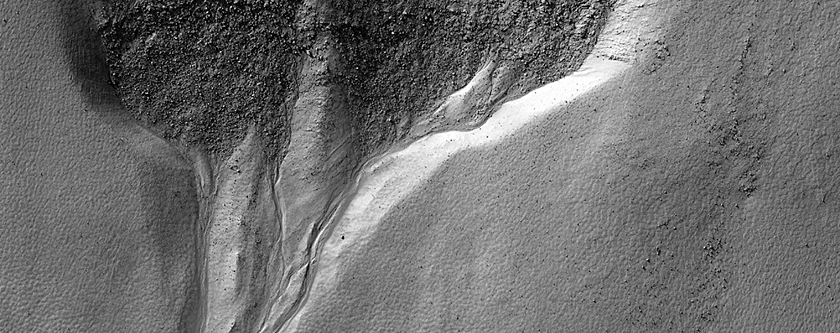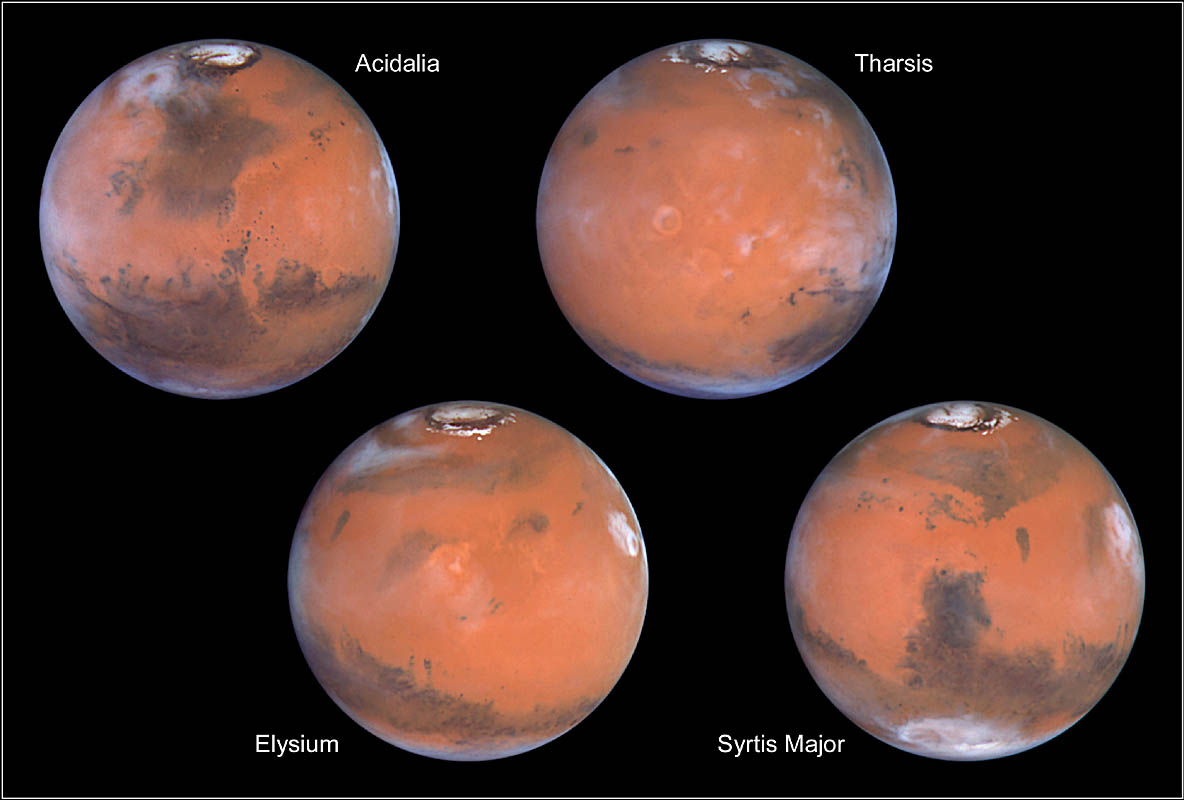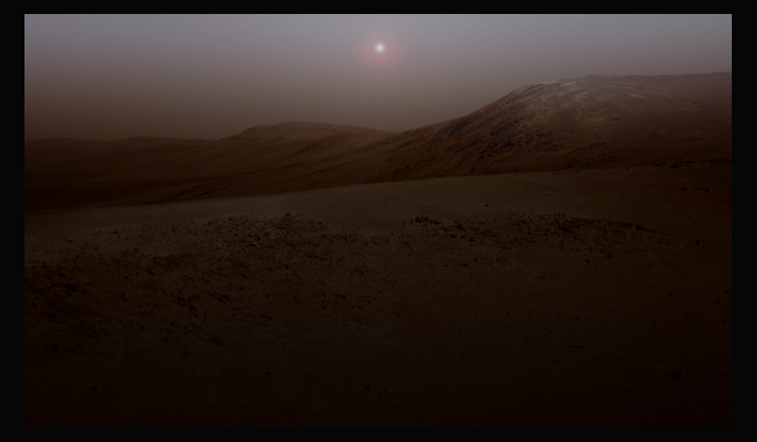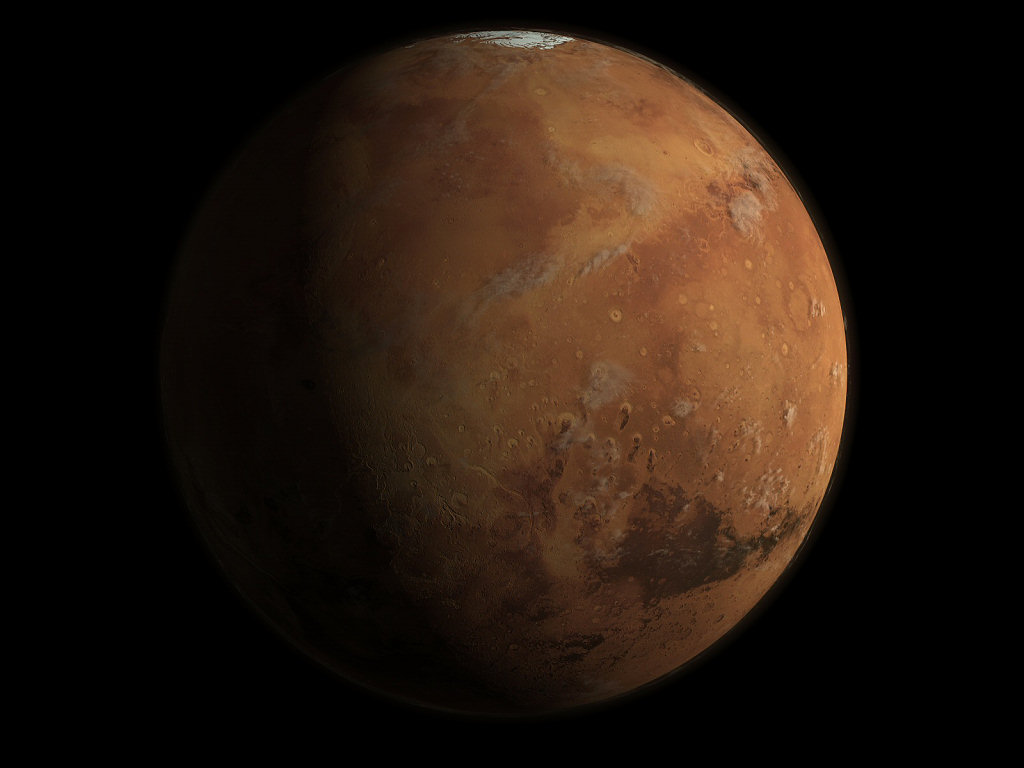Today's Image of Mars shows Orcus Patera, one of the strangest craters ever imaged on Mars. Orcus Patera is 380km long and 140km wide and lies between Elysium Mons and Olympus Mons. The rim of the crater rises 1800m above the surrounding terrain, while the floor of the depression lies 400-600m below the surrounding terrain. That means the crater rim rise 2200-2400m above the crater floor. While scientists are still unsure of how this strange crater was formed they do have some very good guesses:
While it could have been one big crater that got compressed down to size, I've noticed from showcasing a lot of craters on this site that a lot of them develop a central mound. If this one larger crater, then what happened to the central mound? [For an example of a central mound just look at the crater on the bottom left of this image.]
This crater could be a merger of two recent craters, but if there was enough wind erosion to remove all signs of an adjoining crater wall there would probably also be enough wind to erode a lot of the smaller surrounding craters.
EDIT: A reader pointed out the blue in Orcus Patera's central crater and both of us wanted to know what it was so I asked the European Space Agency's Mars Express Science Team (ESA) and they posted an answer to their website! [See their answer]
This image was taken by the Mars Express High Resolution Stereo Camera. Clicking on this image will take you to the hi-res, zoomable image from the ESA. [See the original ESA article on Orcus Patera]
- The crater was most likely formed by a meteor that struck the surface at a very shallow angle. The best way to imagine this is to imagine the meteor hitting the ground like a plane landing, except the meteor doesn't have wheels so it slides across the surface until friction brings it to a halt.
- Another suggestion is that the crater was originally rounder, but due to erosion and gravity the side of the crater collapsed in on each other and filled in everything but what we see now.
- This crater could actually be the result of two or three adjacent craters where the adjoining rooms have eroded away.
While it could have been one big crater that got compressed down to size, I've noticed from showcasing a lot of craters on this site that a lot of them develop a central mound. If this one larger crater, then what happened to the central mound? [For an example of a central mound just look at the crater on the bottom left of this image.]
This crater could be a merger of two recent craters, but if there was enough wind erosion to remove all signs of an adjoining crater wall there would probably also be enough wind to erode a lot of the smaller surrounding craters.
EDIT: A reader pointed out the blue in Orcus Patera's central crater and both of us wanted to know what it was so I asked the European Space Agency's Mars Express Science Team (ESA) and they posted an answer to their website! [See their answer]
This image was taken by the Mars Express High Resolution Stereo Camera. Clicking on this image will take you to the hi-res, zoomable image from the ESA. [See the original ESA article on Orcus Patera]




